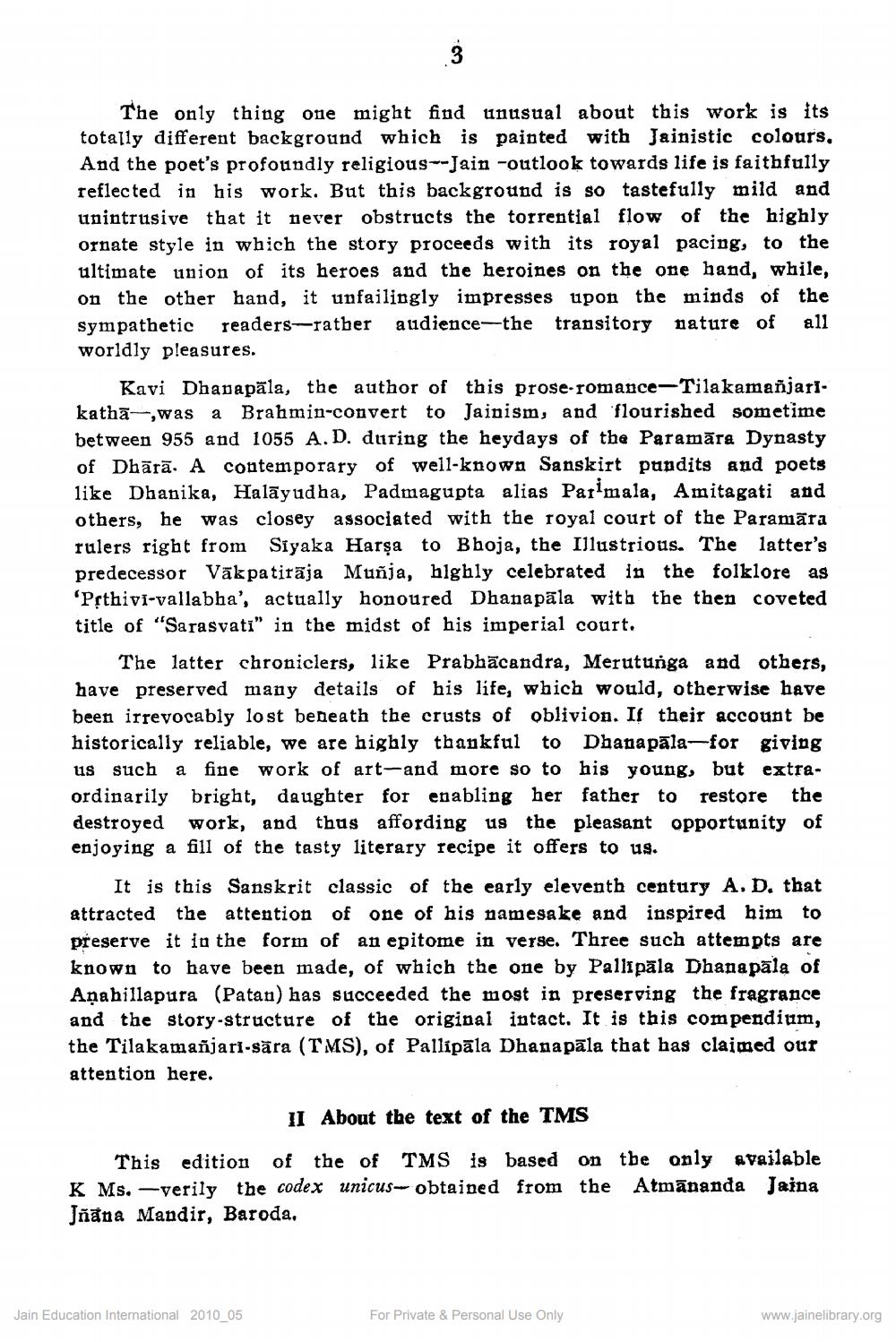________________
3
The only thing one might find unusual about this work is its totally different background which is painted with Jainistic colours. And the poet's profoundly religious--Jain -outlook towards life is faithfully reflected in his work. But this background is so tastefully mild and unintrusive that it never obstructs the torrential flow of the highly ornate style in which the story proceeds with its royal pacing, to the ultimate union of its heroes and the heroines on the one hand, while, on the other hand, it unfailingly impresses upon the minds of the sympathetic readers-rather audience the transitory nature of all worldly pleasures.
Kavi Dhanapala, the author of this prose-romance-Tilakamañjarikatha-,was a Brahmin-convert to Jainism, and flourished sometime between 955 and 1055 A. D. during the heydays of the Paramara Dynasty of Dhara. A contemporary of well-known Sanskirt pundits and poets like Dhanika, Halayudha, Padmagupta alias Parimala, Amitagati and others, he was closey associated with the royal court of the Paramāra rulers right from Siyaka Harṣa to Bhoja, the Illustrious. The latter's predecessor Vakpatiraja Muñja, highly celebrated in the folklore as 'Pṛthivi-vallabha', actually honoured Dhanapala with the then coveted title of "Sarasvati" in the midst of his imperial court.
The latter chroniclers, like Prabhācandra, Merutunga and others, have preserved many details of his life, which would, otherwise have been irrevocably lost beneath the crusts of oblivion. If their account be historically reliable, we are highly thankful to Dhanapala-for giving us such a fine work of art-and more so to his young, but extraordinarily bright, daughter for enabling her father to restore the destroyed work, and thus affording us the pleasant opportunity of enjoying a fill of the tasty literary recipe it offers to us.
It is this Sanskrit classic of the early eleventh century A. D. that attracted the attention of one of his namesake and inspired him to preserve it in the form of an epitome in verse. Three such attempts are known to have been made, of which the one by Pallipāla Dhanapāla of Anahillapura (Patan) has succeeded the most in preserving the fragrance and the story-structure of the original intact. It is this compendium, the Tilakamañjari-sära (TMS), of Pallipala Dhanapala that has claimed our attention here.
II About the text of the TMS
This edition of the of TMS is based on the only available K Ms.-verily the codex unicus- obtained from the Jñana Mandir, Baroda.
Atmananda Jaina
Jain Education International 2010_05
For Private & Personal Use Only
www.jainelibrary.org




